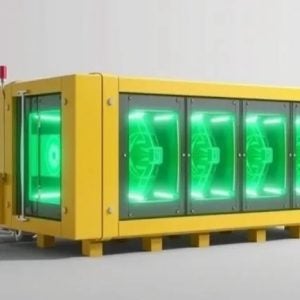Operators of the Dounreay nuclear plant in northern Scotland have come up with a seven-year plan to retrieve spent fuel particles from a section of seabed around the plant’s old active effluent outlet.
The plan to remove offshore particles is to be accompanied by the ongoing legal requirement to detect and remove particles from local beaches – work that is expected to total about £18–25 million.
The 0.6km2 section lies above the site’s old effluent diffusion chamber and is believed to be the main source of particle pollution washing up on local beaches, although there are other less significant suspected sources.
The particles range from over 106Bq Cs-137 (designated significant), 105 to 106Bq Cs-137 (relevant), to less than 105Bq Cs-137 (minor), with retrieval efforts centring on the ‘relevant’ and ‘significant’ fuel fragments.
The particles were produced by cropping and milling to remove fuel casing prior to reprocessing at Dounreay and are roughly the size of a grain of sand. The largest found on a local beach was 6mm.
Many were flushed out to sea through the active effluent system but other routes to the environment were suspected, including non-active drains and contaminated topsoil.
Following public responses, plant operator UKAEA now plans to use a remote-operated vehicle attached to a boat to vacuum particles from the seabed.
If the plan gains regulatory approval, these operations would take place during summer months over the following years, as sea conditions are too rough at other times of the year.
Two companies, including local diving firm Fathoms, are developing a specialised robot in a bid to win the work.
The old diffusion chamber, blasted from the bedrock below the sea, is thought to contain more particles.
A possibility being considered is to fill this chamber with grout in future but only if this will not cause significant further pollution.
The seven-year plan aims to reduce the particle pollution in the long term but no perfect solution exists.
The UKAEA admits its solution has been tempered by cost, as well as being restricted by a desire to avoid releasing more particles currently entrained in the effluent system and offshore sediment.
The UKAEA consultation on the plan closes on December 12.
Dounreay Map showing fuel particles found offshore near Dounreay Dounreay pollution map






